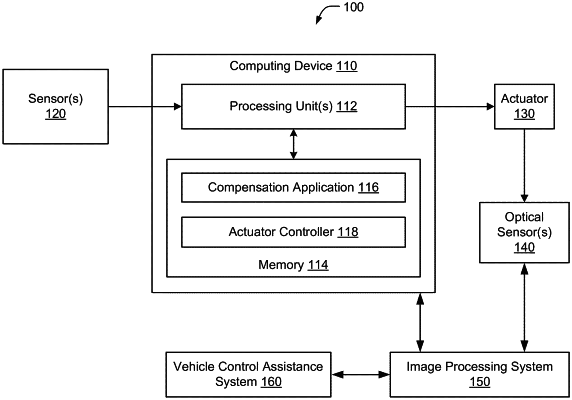| CPC G01P 15/093 (2013.01) [B60R 21/0132 (2013.01); F16M 11/105 (2013.01); F16M 11/18 (2013.01); G01P 15/18 (2013.01); G02B 27/648 (2013.01); H04N 5/2628 (2013.01); H04N 23/695 (2023.01); B60R 2021/01327 (2013.01); H04N 23/61 (2023.01); H04N 23/6811 (2023.01); H04N 23/6812 (2023.01); H04N 23/683 (2023.01)] | 19 Claims |

|
1. A computer-implemented method for controlling an optical sensor mounted on a vehicle, comprising:
receiving sensor data from at least one sensor associated with the vehicle;
filtering the sensor data to remove noise from the sensor data;
detecting an amount of roll of the vehicle based on the filtered sensor data;
generating a command based on the detected amount of roll; and
controlling an orientation of the optical sensor based on the command;
wherein the step of filtering the sensor data comprises;
computing a moving average of a given number of previous data points included in the sensor data; or
performing exponential smoothing on the sensor data.
|